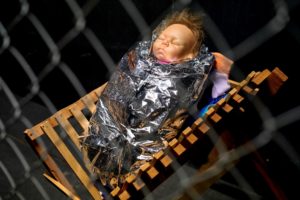
By Jeff Mason and Jonathan Allen
WASHINGTON/NEW YORK (Reuters) – President Donald Trump told Americans on Wednesday that the risk from coronavirus remained “very low,” and placed Vice President Mike Pence in charge of the U.S. response to the looming global health crisis.
At a White House briefing, Trump defended his administration’s handling of the crisis and said health experts were “ready, willing and able” to move quickly if the virus spreads.
Trump made his comments as public health officials warned Americans to prepare for more coronavirus cases. The Centers for Disease Control and Prevention confirmed an infection of the new coronavirus in California in someone who had not traveled outside the United States or been exposed to a person known to have the virus, a first for the country.
How the person was infected was not known. It brought the total number of cases in the United States to 15, according to the CDC.
New York Mayor Bill de Blasio called on the government to help the city obtain 300,000 extra protective masks. There were no confirmed cases in the city but de Blasio announced plans to provide up to 1,200 hospital beds if needed.
U.S. stock markets fell for the fifth consecutive day on investors’ alarm about the respiratory disease spreading.
At the White House, Trump said he was not ready to institute new travel restrictions for countries such as South Korea and Italy that are dealing with outbreaks – although he could not rule it out. The State Department raised its travel alert level for South Korea and urged Americans to reconsider going there.
The CDC has advised Americans to not visit China and South Korea, and on Wednesday stepped up travel warnings for Iran, Italy and Mongolia.
“The risk to the American people remains very low,” Trump said, flanked by Pence and public health officials.
He said the spread of the virus in the United States was not “inevitable” and then went on to say: “It probably will, it possibly will. It could be at a very small level, or it could be at a larger level. Whatever happens we’re totally prepared.”
Dr. Anthony Fauci, the head of the National Institute of Allergy and Infections Diseases, said that while the virus was contained in the United States, Americans must prepare for a potential outbreak as transmissions spread outside of China.
U.S. Health and Human Services Secretary Alex Azar said the United States has 59 coronavirus cases, including 42 American passengers repatriated from the Diamond Princess cruise ship docked in Japan.
‘POSSIBILITY OF PANDEMIC’
“We have to be alert to the possibility of a pandemic,” Peter Marks, director of the Food and Drug Administration’s Center for Biologics Evaluation and Research, said in an interview.
House of Representatives Speaker Nancy Pelosi, a Democrat, said in a statement that the Trump administration “has mounted an opaque and chaotic response to this outbreak.”
She said the House would put forward a “funding package with transparency and accountability that fully addresses the scale and seriousness of this public health crisis.”
Trump is seeking $2.5 billion from Congress to boost the government’s virus response, an amount Democrats said falls far short of what is needed. Senate Democratic Leader Chuck Schumer called for $8.5 billion to prepare.
Global stock markets have slumped in recent days due to worries over a prolonged disruption to supply chains and economies from the virus, which has infected about 80,000 people and killed nearly 3,000, mostly in China.
U.S. stocks turned lower in afternoon trading – the S&P 500 index fell for a fifth straight day and the Dow Jones Industrial Average <.DJI> ended down 123.77 points, or 0.46%. [.N]
Trump, who is running for a second term in the November election, has been increasingly alarmed by the drop in U.S. stock markets, which he considers a barometer of the health of the American economy and sees as important to his re-election.
He told reporters at the White House that fears of the coronavirus had hurt the stock markets. But he also blamed the Democratic presidential candidates for spooking investors.
“I think the financial markets are very upset when they look at the Democrat candidates standing on that stage making fools out of themselves,” Trump said in reference to debates among the Democratic contenders vying for the right to challenge him.
Earlier in the day, Trump accused two cable TV news channels, CNN and MSNBC, of presenting the danger from the virus in as bad a light as possible and upsetting financial markets.
(Reporting by Jeff Mason and Jonathan Allen; additional reporting by Steve Holland, Makini Brice, Susan Heavey and Michael Erman; Writing by John Whitesides and Alistair Bell; Editing by Jonathan Oatis, Bill Berkrot and Grant McCool)














